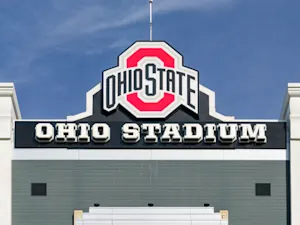
Could Your Grocery Store Make You Sick?
Walking into a grocery store, you expect a clean and safe environment for your shopping needs. However, not all stores meet proper hygiene standards, posing potential health risks to customers. Recognizing the warning signs of inadequate sanitation can help you avoid unsafe shopping conditions and ensure a healthier experience.
1. Dirty Entrance Areas
Your grocery store's entrance is the first clue to its overall cleanliness. If you notice grit, litter, coffee stains, cigarette butts, or gum residue around the entrance area, it's a sign of poor maintenance. This negligence can suggest deeper hygiene issues once you're inside. The store's exterior, including the parking lot, should be clean and well-maintained to give a good first impression.
2. Lack of Sanitizer or Wipes
Hand sanitizer and wipes are essential in high-touch areas like shopping cart stations and checkout counters. The absence of these sanitizing tools indicates that the store may not be adhering to the United States Federal Drug Administration's recommendations for maintaining a safe environment for shoppers. Strategic placement of trash cans and sanitizing stations can significantly improve the overall cleanliness and hygiene of the store.

3. Filthy Salad Bars, Hot Bars, and Beverage Stations
Self-serve stations like salad bars and beverage dispensers pose high contamination risks when improperly managed. The FDA recommends discontinuing these operations to prevent the spread of germs. A grocery store that keeps these areas open might be neglecting other critical sanitation practices. Additionally, the presence of sneeze guards and separate serving utensils for each dish can help reduce contamination risks. Also, watch out for fellow shoppers who have no regard for hygiene!
4. Sticky Floors
Floors should be washed and buffed daily to maintain a hygienic environment. If the floors are dirty, sticky, or muddy, it can reflect the store's lack of commitment to cleanliness. Regular cleaning and maintenance, such as vacuuming carpeted areas and washing hard surfaces, are crucial for preventing grime buildup.
5. Unsanitary Restrooms
Restrooms require frequent inspection and cleaning to prevent them from becoming breeding grounds for germs. A well-maintained restroom should be bright, fresh-smelling, and fully stocked. If the restrooms are dirty or lack supplies, it indicates that other areas of the store might also be neglected. Clean restrooms are essential for making a positive impression on customers.
6. Neglected Spills and Messes
Spills should be cleaned promptly to avoid accidents and maintain cleanliness. If you see the same mess during your entire shopping trip, it means the store isn't addressing sanitation issues quickly enough. High-traffic areas should be regularly monitored and cleaned to ensure a safe and sanitary environment for all shoppers.
7. Overcrowded Aisles
Regulating the number of shoppers in the store at one time helps maintain social distancing, which is a good idea even after the COVID-19 pandemic. Stores that do not control crowds increase the risk of spreading infections among customers. Ensuring a clean and organized shopping environment can make it easier for customers to maintain a safe distance from each other.
Paying attention to these signs can help you determine if your grocery store maintains proper sanitation standards. Always be vigilant to protect your health while shopping.
References: 8 Scary Signs Your Grocery Store Isn't Sanitized Properly | Signs You Should Avoid Your Grocery Store's Hot Bar | Why Store Cleanliness Is Important to Shoppers
























